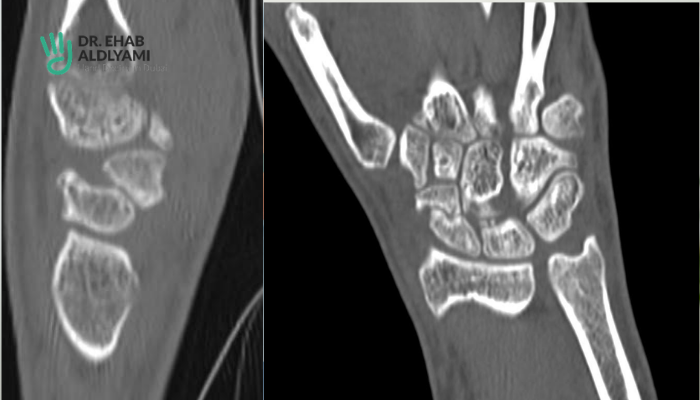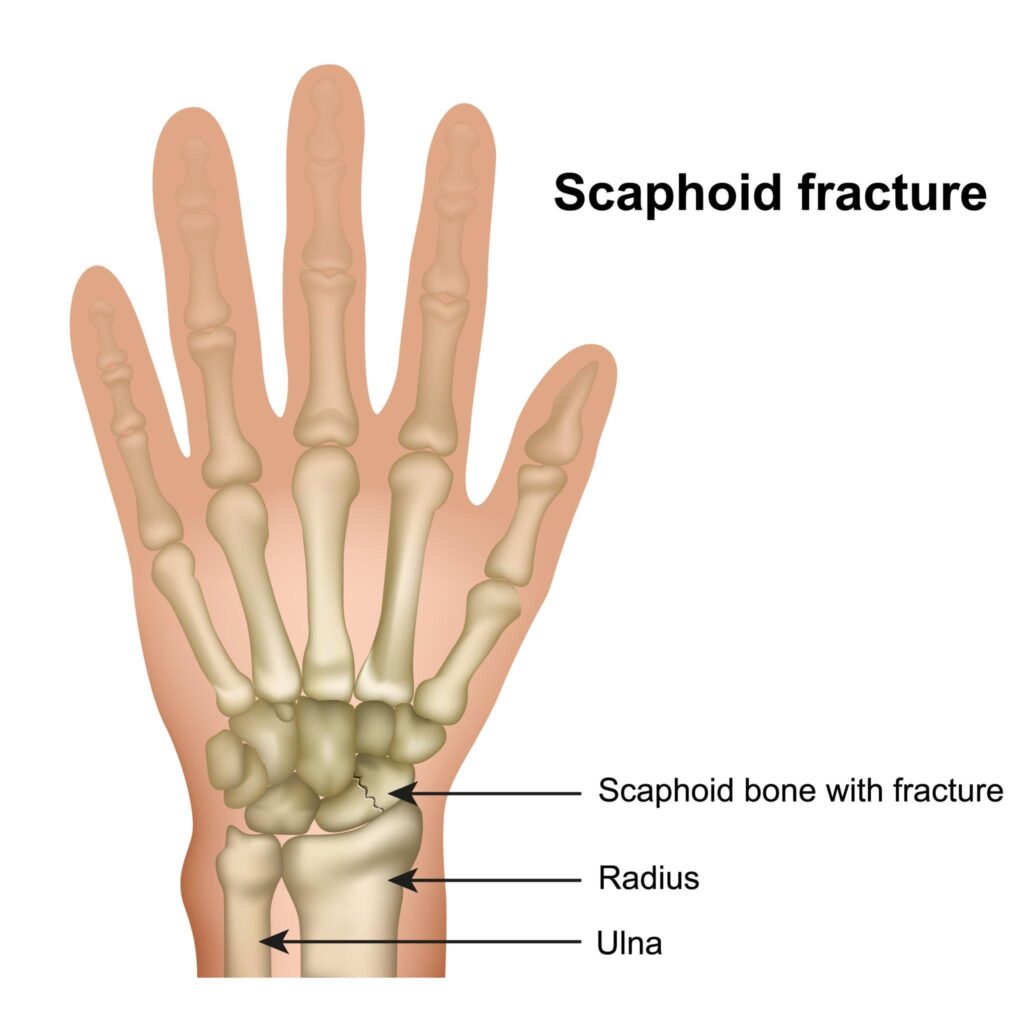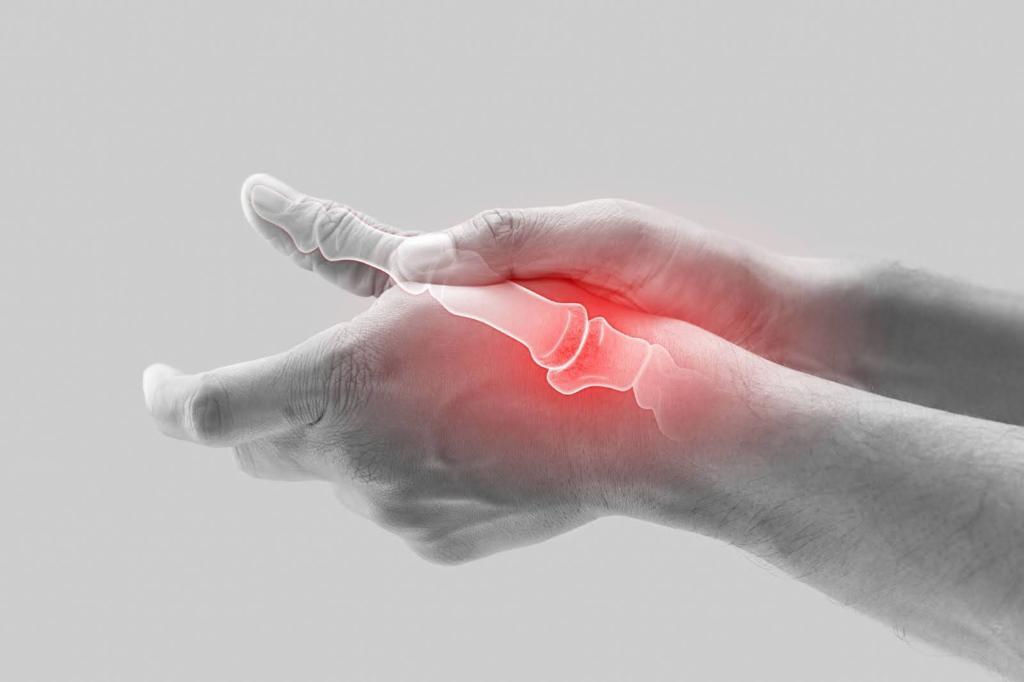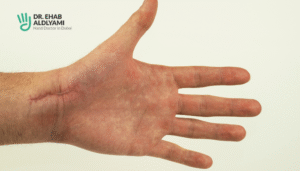What Happens If A Scaphoid Fracture Is Left Untreated?

An Overview of Scaphoid Bone
The human hand is an intricate masterpiece of bones, ligaments, and tendons working seamlessly to perform countless tasks. However, when a tiny yet crucial bone like the scaphoid becomes fractured, the consequences can be more significant than one might think. Dr. Ehab Bassim Aldlyami sheds light on the implications of leaving a scaphoid fracture untreated, unraveling the mysteries of this often underestimated injury.
What is Scaphoid Bone?
Before delving into the repercussions of an untreated scaphoid fracture, it’s essential to understand the bone itself. The scaphoid is a small, boat-shaped bone located near the base of the thumb, forming part of the carpal bones in the wrist. Its strategic position allows for essential wrist movements and stability.

Where is the Scaphoid Bone Exactly Located?
The scaphoid bone is situated on the thumb side of the wrist, connecting the two rows of carpal bones. Its proximity to the thumb and the intricate network of ligaments surrounding it makes it vulnerable to fractures, particularly in cases of falls with an open palm.
What Does a Broken Scaphoid Feel Like?
Recognising a scaphoid fracture can be challenging, as the pain may not be immediately intense. Patients often describe it as a deep, persistent ache in the wrist that intensifies with movement. This subtlety can lead to delayed diagnosis, exacerbating the potential consequences of an untreated scaphoid fracture.

Signs of a Scaphoid Fracture One Must Be Aware Of
Recognising the signs of a scaphoid fracture is crucial for timely intervention. Persistent pain in the anatomical snuffbox area, tenderness to touch, and limited range of motion are common indicators.
However, as the symptoms may not be immediately pronounced, diagnostic tests, including the scaphoid fracture test and imaging studies, are often necessary for accurate diagnosis.
Importance of Timely Diagnosis
The scaphoid fracture may be a consequence of ignorance of pain in the scaphoid bone. That means scaphoid bone pains but no fracture.
However, in most cases, scaphoid pain is a key indicator of a potential fracture. However, it’s crucial to note that pain alone may not confirm the presence of a fracture, as other wrist injuries can cause similar discomfort.
If someone experiences persistent pain in the anatomical snuffbox area (located at the base of the thumb), it is essential to seek prompt medical attention.
Scaphoid Fracture Test
To confirm or rule out a scaphoid fracture, physicians often rely on specific diagnostic tests. The scaphoid fracture test involves applying pressure to the anatomical snuffbox and assessing the patient’s response. Pain during this test can signal a potential scaphoid fracture, prompting further imaging studies such as X-rays or MRIs for a definitive diagnosis.
Treatment Approaches: Tailoring Care Based on Fracture Type
The approach to treating a scaphoid fracture is contingent upon the specific type of fracture, emphasising the importance of tailored care. For completely undisplaced fractures, patients may undergo treatment with a plaster cast, worn for 6 to 10 weeks. This approach is effective for fractures that are challenging to discern on X-rays.
In cases of displaced fractures where bone segments are misaligned, surgical intervention becomes a consideration. Scaphoid surgery, performed under anaesthesia, involves the insertion of a stabilising screw into the bone to promote proper alignment and healing. While surgery has its risks, it often requires a shorter period of immobilisation compared to non-operative methods.
Late presentations of unhealed scaphoid fractures, a more complex scenario, may necessitate intricate treatment. In such cases, bone grafts from the back of the wrist may be utilised in addition to screw fixation, stimulating proper healing. It’s crucial to note that seeking prompt medical attention and following the recommended treatment plan is paramount to prevent complications and ensure optimal recovery.
Dr. Ehab Bassim Aldlyami states the significance of early intervention to mitigate the risks associated with untreated scaphoid fractures and to promote a successful and uneventful healing process.
Consequences of Non-Treatment
Failure to address a scaphoid fracture promptly and appropriately can lead to severe consequences. The scaphoid bone has a blood supply from very thin arteries. Untreated fractures can result in complications such as non-union, where the bone fails to heal.
As a consequence, it might cause avascular necrosis, a condition where the bone tissue dies due to insufficient blood flow. These complications not only prolong recovery but also increase the risk of long-term joint damage and arthritis in the affected wrist.
Some Guideline FAQs:
Can you move your hand with a scaphoid fracture?
Yes, individuals with a scaphoid fracture can still move their hands, but they may experience pain and limited range of motion, especially during certain activities. It is crucial to avoid unnecessary movement to prevent further damage and promote healing.
Does a scaphoid fracture hurt immediately?
Not always. Unlike some fractures that cause immediate and intense pain, a scaphoid fracture may have a delayed onset of symptoms. The scaphoid fracture pain often starts as a dull ache and gradually increases with time, making early detection challenging.
Does a scaphoid fracture hurt to touch?
Yes, a scaphoid fracture can be tender to the touch, especially in the anatomical snuffbox region. However, tenderness alone may not confirm a fracture, highlighting the importance of diagnostic tests for accurate assessment.
Can a scaphoid fracture heal on its own?
In some cases, particularly if the fracture is minor and stable, a scaphoid fracture may heal on its own with immobilisation and proper care. However, untreated or improperly treated fractures can lead to complications such as nonunion or avascular necrosis, where the bone tissue dies in mass due to a lack of blood supply.
A scaphoid fracture may seem inconspicuous at first, but the potential consequences of leaving it untreated can be severe. Dr. Ehab Bassim Aldlyami emphasises the importance of recognising the signs, seeking timely medical attention, and following the recommended treatment to prevent long-term complications.
From understanding the location of the scaphoid bone to recognising the subtle nuances of scaphoid pain, this exploration aims to raise awareness about the significance of addressing a scaphoid fracture promptly and appropriately.










